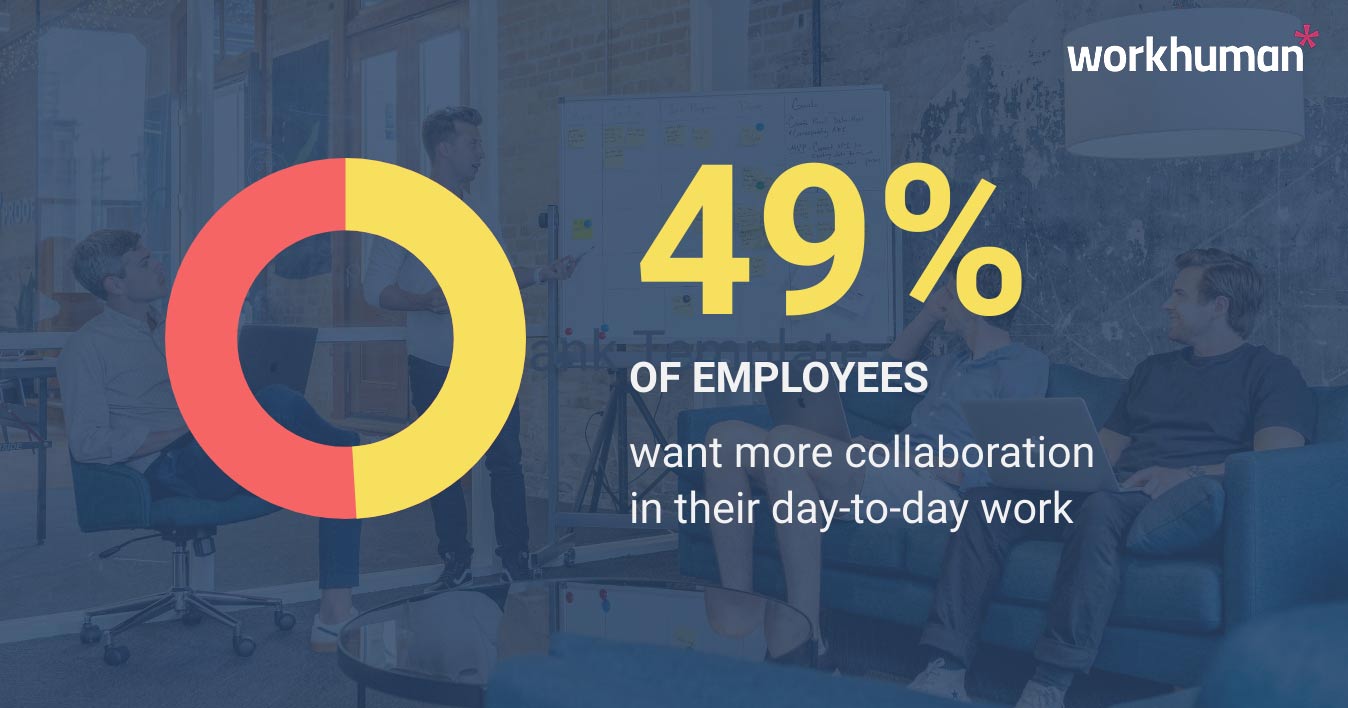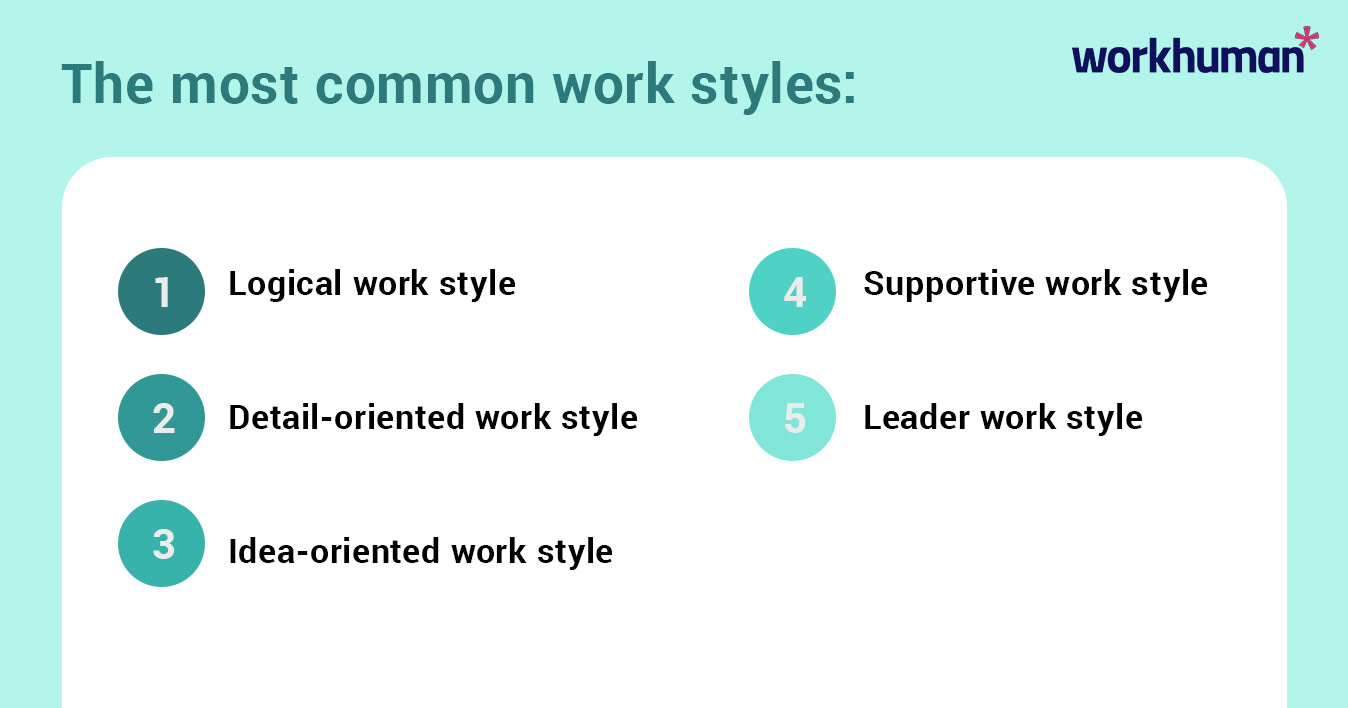Work It Your Way: Exploring the Art of Diverse Work Styles
A recent "2022 State of Collaboration" report shows that 49% of employees want more collaboration in their day-to-day work. One great way to foster collaboration is to understand your work style and the work styles of your team members. This can help encourage more cohesive teamwork and better productivity.

What are working styles?
A working style is an approach to workOpens in a new tab based on one's personality and past professional experiences. These styles can also be shaped by an individual's personal values or long-term goals. Because working styles can differ so greatly from person to person, they can have a big impact, both positively and negatively, on collaboration and workflows.
By gaining a deeper understanding of working styles, you can develop more effective leadership strategies to guide your team.
Why are working styles important?
Understanding working styles is important because it gives leaders deeper insights into the dynamics of their teams. Understanding how each individual works can help nip interpersonal issues in the bud and prevent potential issues with workflows.
This knowledge can also inform how managers delegate and tailor assignments to each individual's unique strengths, a leadership tactic that is proven to increase both productivity and job satisfaction.
What are the 5 common working styles?
While it's impossible to categorize every employee's unique working style, these are the most common:

Logical work style
Employees with a logical work style are highly analytical and guided by data. They thrive on challenges and "getting their hands dirty" by diving into projects. These individuals have their eyes on the big picture and tend to be more focused on projects and outcomes than relationship-building in the workplace.
They are highly results-driven and care deeply about productive workflows, meeting deadlines, and providing feedback to others as needed.
What are the key traits of someone with a logical work style?
- Analytical
- Driven
- Focused
- Rational
What are the examples of a logical work style?
- Managing tight project timelines
- Being adept at complex problem-solving
- Preferring quantitative over qualitative data
Detail-oriented work style
Detail-oriented individuals are very strategic and organized. They are risk-averse and formulaic, preferring to stick to stable, "tried and true" methods, rather than reinvent the wheel. Detail-oriented workers are extremely meticulous and value accuracy and efficiency above all else. They may prefer to work independently as it gives them more control over files, projects, and processes.
What are the key traits of someone with a detail-oriented work style?
- Meticulous
- Organized
- Methodical
- Reliable
What are examples of a detail-oriented work style?
- Overseeing project management
- Double-checking and editing assets
- Writing procedural documents
Idea-oriented work style
These individuals love to try new things and take calculated risks. These employees are creative visionaries who embody what it means to dream big. They're bold thinkers who thrive on creating new things, trying old things new ways, and find the silver lining to learn from their mistakes.
What are the key traits of someone with an idea-oriented work style?
- Strategic
- Visionary
- Ambitious
- Influential
What are examples of an idea-oriented work style?
- Being excited by "hackathons"
- Leading change management
- Hosting brainstorming sessions
Supportive work style
Employees with a supportive work style tend to function as the "glue" between team members. These individuals are highly emotionally intelligent and get along well with their peers. They are great assets to the team, and can often be very helpful with smoothing things out between colleagues when there are communication or process issues.
Individuals with a supportive work style excel when they feel free to speak their minds and advocate for the needs of others.
What are the key traits of someone with a supportive work style?
- Empathetic
- Diplomatic
- Emotionally intelligent
- Sociable
What are the examples of a supportive work style?
- Resolving conflict between team members
- Encouraging collaboration
- Embodying the spirit of a "team player"
Leader work style
Individuals with this work style love to take the lead on projects and initiatives. They have a natural authority that makes others gravitate toward them. These employees are strong organizers and delegators who are great at work management and inspiring productivity and collaboration.
What are the traits of a leader's work style?
- Confidence
- Empathy
- Inspirational motivation
- Accountability
What are the examples of a leader's work style?
- Providing encouraging feedback
- Offering mentorship and support for growth
- Identifying employees' strengths to guide them toward success
How can I best support employees with different work styles in my organization?
Although all these working styles are very different, there are a few simple steps you can take to support all employees more effectively:
Foster a culture of inclusivity
A large factor in encouraging open communication and valuing diverse perspectives in the workplace is respecting differences in working styles. Many leaders may devalue emotional intelligence and strong interpersonal skills, while others may place them in higher importance than technical skills.
In reality, all of these skills are equally important and create different types of positive change in the workplace and foster collaborative work. It's extremely important to create an environment where all individuals feel that their work style is acknowledged and respected.
Build cross-functional teams
While it may seem difficult to get employees with different working styles to collaborate cohesively, there are some things you can do to make things run more smoothly. By strategically assembling teams so that many diverse work styles are represented and positioned for optimal functioning, you can create an organizational structure that is more conducive to teamwork and productivity.
When team members with complementary skills sets feel how satisfying it can be to work together effectively, they're more likely to see the value of one another's unique contributions. This, in turn, will make them more excited to work together in the future, as their synergy becomes increasingly palpable.
How should I manage employees with different work styles?
Here are some tips to help you lead employees with different personality types more effectively:
Practice effective communication strategies
It's important that you cater to all working and learning styles when communicating important information. This may include things like emailing written notes after a meeting or reiterating important information from company-wide gatherings in employee one-on-ones.
Taking the time to appeal to these various communication styles can play a big part in making sure everyone is on the same page and aware of what needs to be done.
Employ flexible leadership approaches
Every employee is not going to respond to the same leadership methodologies as their team members. Some employees may want more frequent check-ins, others may appreciate verbal praise more than others, and some may deeply value mentorship opportunities. It's important to speak to your employees about how to best support them and be sure to tailor your strategies accordingly.
Foster a culture of mutual respect
No one working style is superior than the rest, and you need employees of all types to create a well-rounded team. All employees have their own strengths and weaknesses, and it's important that they learn to value one another for those differences.
It's also important that leaders value their team members' work styles equally and learn to see the importance of what each person brings to the team. Providing social recognition can be a great way to bolster these feelings of gratitude and mutual appreciation.
Use helpful digital tools
Remote collaboration tools for business are a great way to streamline processes and create more order and stability in your work environment. Systems like Asana or Workfront create can facilitate teamwork and help your employees collaborate. The added visibility and accountability these systems create can help your team get things done more quickly and accurately.
Are you ready to transform your workplace with a human-centric approach? Discover strategies and tactics to strengthen connections and build a culture of recognition in your organization.
Embrace celebrations that honor the whole human and recognition that flows up, down, and across your company. Set the path for a brighter future of work with a human-centric approach.
Click the link to download the report now!
FAQs
How do I know which type of work style each of my employees has?
Employees can take a personality test called a work style assessment to identify how they work. After each employee answers a series of questions about how they work best, the quiz will then tell them which style they fall into most. That information can be used to help individuals and teams work better and more efficiently.
Should I ask potential job candidates about their personal work styles?
It can be extremely helpful to understand a potential employee's work style to see how they would fit into the team. While potential employees may not be able to identify their working style by its exact name, they should be able to describe it if you guide them with the right questions.
This is an important part of the application process, because a clear discrepancy between working styles for a manager and potential employee can be a red flag that there isn't a great match.
What's the best thing to do when a leader and an employee have very different work styles?
This can be a very difficult issue to navigate on both sides. When this happens, it's important to remember that no working style is superior to another, they are all simply different. In this case, project managers may be able to design workflows so each individual is working with their unique strengths rather than against them.
That way, everyone can see the value of one another's contributions. Educating your staff about different working styles may also be helpful to aid that process.
Conclusion
Understanding your employees' work styles is simply another tool to help you be the best manager possible. Gathering this additional insight will help you structure your teams more efficiently, prevent interpersonal conflict, and avoid disruptions to your workflows.
This knowledge is also very empowering for employees, as it can help them take on new projects that play to their unique strengths, as well as identify areas for growth and improvement.
About the author
Anna Picagli
As an RYT500 yoga instructor and a Reiki Master Teacher, Anna is an advocate for holistic wellness, especially within the workplace. She’s extremely passionate about the brain-body connection and exploring how mental and physical wellness intersect.
Anna has experienced firsthand how chronic stress, overworking, poor management, and other organizational issues can lead to extreme burnout. Knowing the impact that a toxic work environment can have on a person’s body, psyche, and general sense of well-being, she now works to direct others away from facing the same fate.
As Workhuman’s Senior Content Specialist, Anna is a regular contributor to Workhuman iQ reports and aims to create resources that company leaders can reference to help improve their culture and empower their employees, creating healthier workplaces for everyone.
In her free time, she’s an avid solo traveler, a voracious reader, and a seasoned home chef. You can learn more about Anna’s work on LinkedIn or through the Yoga Alliance.